| Subsequent
Entitlement to the Title 'Lord Scales' |
| Although the De
Scales peerage fell into abeyance on the death of
Anthony Woodville, Lord Rivers, moieties
of the barony are deemed to have passed down to
some of the descendants of Elizabeth and Margaret
de Scales, who in principle have a right to
pursue termination of the abeyance and
reinstatement of the title Lord Scales
for themselves. Some of these would have held
more prestigious titles and not shown any
interest. Some people with the name Scales
these days might wonder if they have any
connection to all of this. I think I am fairly
safe in saying that nobody at present called
Scales will be able to establish a link via the
historical record. The name, as mentioned
earlier, also has origins outside of the
nobility. However ... |
| According to Nicolas's The Historic Peerage
of England (see the references page) there
were two moieties of the Barony of Scales in
existence in the latter part of the 19th century,
one deriving from Elizabeth de Scales and one
from Margaret de Scales. |
| Descendants
of Elizabeth de Scales |
| Beginning with
Elizabeth's heirs, the male line of Sir William
Tyndale (see the previous page) continued
unabated in Norfolk and Essex until John Tyndale
(d.1706). He had just one child, a daughter
Elizabeth, who married Jasper Blythman Esq. Their
only child Lucy Blythman married Charles King
Esq. and they had two daughters and coheirs.
Elizabeth King married Rev. William Campbell and
had no children. Lucy King married Rev. Richard
Bullock and survived her sister, who died in
1779, and represents one moiety of the Barony of
Scales. |
| Descendants
of Margaret de Scales |
| As for Margaret's hiers,
John de Vere
12th Earl of Oxford (see the previous page), a
Lancastrian loyalist beheaded in 1462, was
succeeded by John de Vere 13th Earl of Oxford
(1442-1512), also a Lancastrian, who survived to
become a key figure under Henry VII but had no
children by either of his wives. He was succeeded
by his nephew John de Vere 14th Earl of Oxford
(1499-1526), who was Lord Great Chamberlain of
England and attended Henry VIII at the Field
of the Cloth of Gold. However, he seems to
have indulged in the good life a little too much
and in 1523 the king
orderered him to 'moderate his excessive hunting,
drink less wine, not stay up late, eat less meat,
and forbear excessive and superfluous apparel'.
I'm already feeling a certain kinship with him.
He died without issue aged only 26. |
| This is where things
become complicated because he was succeeded by
his second cousin John de Vere 15th Earl of Oxford
(1482-1540) but the moiety of the Barony was
split between his nephew Sir Edward Norris (son
of his aunt Joan), his four sisters and the 15th
Earl. The sisters were: |
- Elizabeth,
who married Sir Anthony Wingfield. They
evidently had eight sons and seven
daughters, the only one I can identify
being Elizabeth Naunton.
- Margaret,
about whom nothing further is known.
- Dorothea,
who married John Neville, 3rd Lord
Latimer. They had a son, John Neville,
4th Lord Latimer, and a daughter,
Margaret Neville, whose marriage is not
recorded. John senior went on to beat
Henry VIII to the hand of Katherine Parr.
- Ursula, who
married twice but had no issue.
|
| According to Burke's Dormant, Abeyant,
Forfeited and Extinct Peerages of the British
Empire (see the references page), by the
latter part of the 19th century this moiety of
the Barony was divided among: |
- John James Hugh Henry Stewart-Murray,
7th Duke of Atholl (1840-1917).
- Winchcombe
Henry Howard Hartley of Lyegrove,
Gloucestershire (d. 1881).
- Rainald
Knightley, 1st Baron Knightley of
Fawsley, Northamptonshire (1819-1895).
- Robert
Burdett, 6th Baronet of Bramcote,
Warwickshire (1796-1880).
- Charles
Robert Tempest, 1st Baronet of Broughton
Hall and Coleby, Yorkshire and
Lincolnshire (1794-1865).
- Frederick
Charles Standish of Standish Hall,
Lancashire (1824-1883).
- Mrs. Troth
Jenkins.
- John
Francis Wright of Kelvedon Hatch, Essex
(d.1868).
- John
Rogerson Rollo, 10th Lord Rollo of
Duncrub, Perthshire (1835-1916).
- George
William Villiers, 4th Earl of Clarendon
(1800-1870).
- Montague
Bertie, 6th Earl of Abingdon (1808-1884).
|
| It is possible to
establish the genealogy of some of the above
using the prodigious website The Peerage
(see the
references page). |
| |
| John
Stewart-Murray, 7th Duke of Atholl, was a captain
in the Scots Fusilier Guards and later Lord
Lieutenant of Perthshire. He was a descendant of
John Murray, 1st Marquess of Atholl (1631-1703)
who married Lady Amelia Anne Sophie Stanley
(d.1703). She was the granddaughter of William
Stanley, 6th Earl of Derby (1561-1642), and Lady
Elizabeth de Vere (d.1627), the daughter of
Edward de Vere, 17th Earl of Oxford (1550-1604 -
see the previous page) by his second marriage. |
| Winchcombe
Henry Howard Hartley was a landed gentleman at
Bucklebury House in Berkshire. He was descended
from the marriage of Frances de Vere (1517-1577),
daughter of the abovementioned 15th Earl of
Oxford, from whom the moiety of the Barony
descended, and Henry Howard, Earl of Surrey
(1517-1547), son of Thomas Howard, 3rd Duke of
Norfolk (see previous page), both of whom were
descendants of Margaret de Scales. |
| Rainald
Knightley, 1st Baron Knightley of Fawsley, was a
Conservative Party Member of Parliament. He was
descended from Thomas Knightley of Burghall,
Staffordshire, son of Sir Valentine Knightley of
Fawsley, Northamptonshire (d.1566). The family
later moved back to Fawsley. I have not been able
to find any connection of this family to the
Barony. A distant ancestor of Valentine married
into the Burgh family, explaining the Burghall
connection. |
| Robert Burdett,
6th Baronet of Bramcote, served as Sheriff of
Derbyshire. He was, significantly, descended from
the abovementioned Thomas Knightley of Burghall.
Robert was descended from another Robert Burdett
(d.1716), who married Elizabeth Tracy
(1679-1747). She was the daughter of William
Tracy, 4th Viscount Tracy of Rathcoole
(1657-1712) and Lady Frances Devereux
(1659-1687). Frances was the granddaughter of Sir
Walter Devereux (1578-bef.1658), who married
Elizabeth Knightley, daughter of Thomas. The
connection to the Barony seems to be further up
the tree, but remains a mystery to me. |
| Charles Robert
Tempest, 1st Baronet of Broughton Hall and Coleby, was High Sheriff of Yorkshire
and later Deputy Lieutenant of Lincolnshire. He
actually claimed to be a co-heir to the Barony
and his case was heard in the House of Lords in
1856. It cost him £3000 (about £130,000 in
today's money) to pursue, but he was apparently
successful in proving his descent from Margaret
de Scales. Unfortunately he died unmarried and
the Barony remained in abeyance. He was the son
of Stephen Tempest (1756-1824) and Elizabeth
Blundell. Her grandfather Robert Blundell
(d.1773) married Catherine Stanley, who was
presumably descended from William Stanley, 6th Earl of
Derby, and Lady Elizabeth de Vere (see above).
However, I have not been able to trace the
details in the standard peerage records, which is
presumably why it cost Sir Charles so much money
to do so. |
| The ancestry of
Frederick Charles Standish eludes me. He went to
Australia in 1852, where he became Chief
Commissioner of Police in Victoria and was
involved in the capture of the Ned Kelly Gang. |
| Mrs. Troth
Jenkins remains a mystery to me. |
| John Francis
Wright of Kelvedon Hatch, Essex, was a landed
gentleman with a seat at Kelvedon Hall. His
family had resided there since the 16th century,
but I have not been able to find much
genealogical information. |
| John Rogerson
Rollo, 10th Lord Rollo of Duncrub, Perthshire,
was a Justice of the Peace and Deputy Lieutenant of Perthshire
and Dumfriesshire. His family can be traced back
to mediaeval times but again I can find no
connection with the Barony. |
| George William
Villiers, 4th Earl of
Clarendon, was a diplomat and statesman. He was
descended
from the marriage of
Sir Edward Villiers (1620-1689) to Lady Frances
Howard (d.1677), whose great-great-grandparents
were the abovementioned Henry Howard and Frances
de Vere. |
| Montague
Bertie, 6th Earl of Abingdon, was a Member of
Parliament who later became Lord Lieutenant of
Berkshire. He was descended from James Bertie, 1st Earl of Abingdon
(1653-1699), who was the son of Montague Bertie,
2nd Earl of Lindsey (1608-1666) and his second
wife Bridget Wray, Baroness Norris (1627-1657).
Her grandmother was Lady Bridget de Vere
(d.1645), another daughter of Edward de Vere, 17th Earl
of Oxford (see the previous page), by his second
marriage. |
| |
| You can, if you feel so
inclined, trace many of the descendants of the
above at the website The Peerage or,
presumably, through the census returns. I have
not yet had the opportunity to consult a recent
edition of Burke's Peerage, so it is still to me
an open question where the moieties of the
abeyant De Scales Barony reside these days. |
|
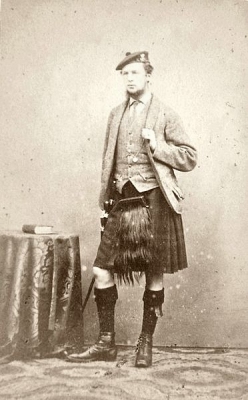 |
| John
Stewart-Murray, 7th Duke of Atholl |
| |
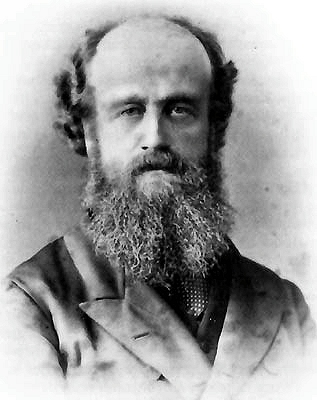 |
| Winchcombe
Henry Howard Hartley |
| |
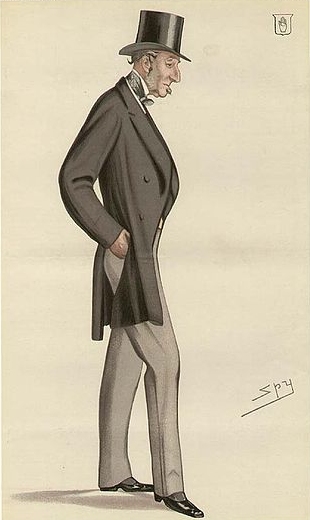 |
| Rainald
Knightley, 1st Baron Knightley |
| |
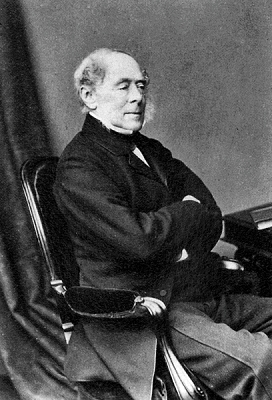 |
| George
William Villiers, 4th Earl of Clarendon |
| |
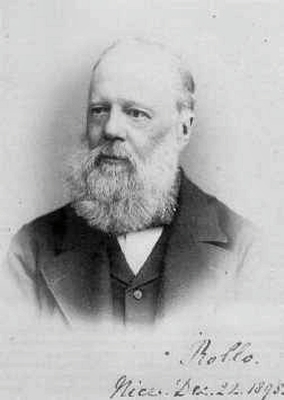 |
| John
Rogerson Rollo, 10th Lord Rollo |
|